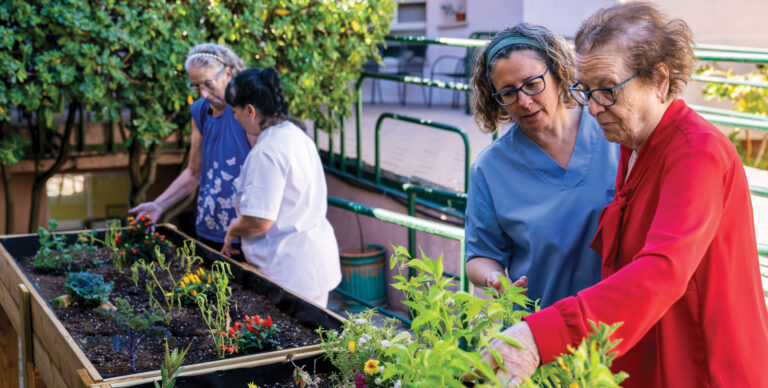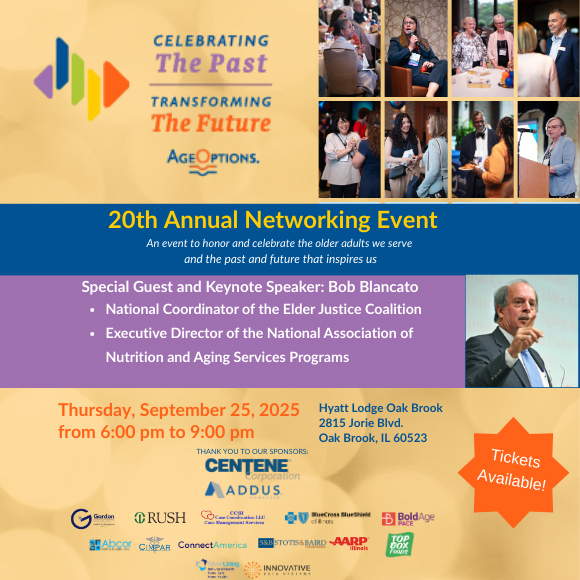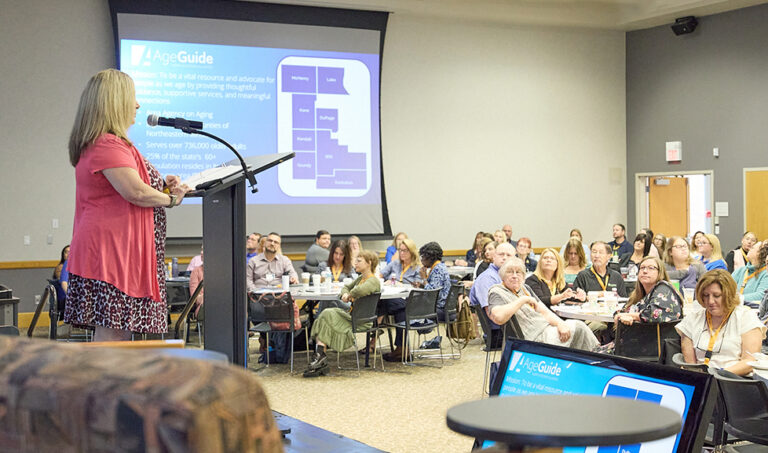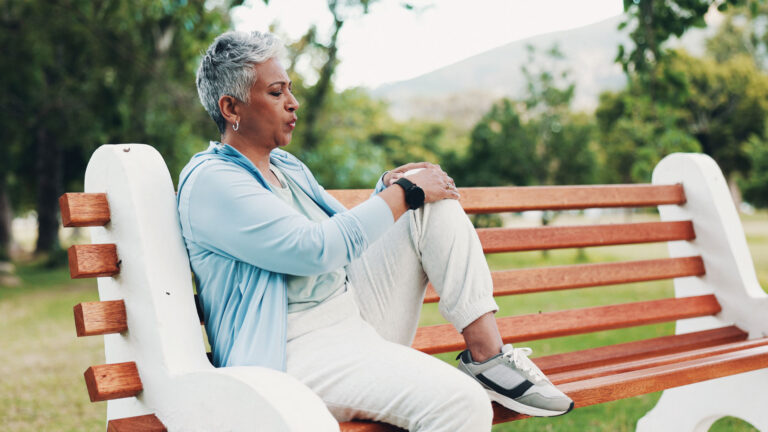
Susan is a Chicago-based writer focused on science and the environment. Her work has appeared in Scientific American and Science.
How the outdoors supports healthy aging
Fact checked by Jim Lacy
Behind the senior living facility where Dwayne Dobschuetz lives in Des Plaines, Illinois, a trail winds through a wooded area. Though biking is his physical exercise of choice, he occasionally walks through the forest, taking in the dappled sunlight and woody scents.
“It is just tremendously calming, whether I’m on my bike or walking,” Dobschuetz says.
Now retired, he has time to enjoy the benefits of nature firsthand, but he frequently witnessed nature’s effects on older adults during his career as a nurse practitioner at Northwestern Memorial Hospital. Dobschuetz regularly made house calls, riding a purple bike named Barney, adorned with the Northwestern logo. And he noticed a pattern among his patients: Those who spent more time outdoors tended to be healthier and more engaged with their communities.
“I think many people stayed in their apartment and did this or that, but they weren’t actively trying to stay mobile,” he says. “I don’t think that helped them.”
Researchers agree. Studies have found that spending just two hours a week in nature is linked to improved health and well-being. Meta-analyses indicate that time in green space lowers blood pressure and cholesterol and reduces the risk of diabetes and stroke. Trees emit volatile organic compounds called phytoncides, which boost immunity by increasing white blood cell counts after four hours in a forest, studies have shown.
Nature benefits mental health, too. Time outside decreases cortisol levels, slows the heart rate, and helps people feel more relaxed. In a 2021 – 2024 study of 8,000 participants in England, people reported lower levels of anxiety and depression after walking in nature, gardening, or planting trees. Such activities — along with sitting, walking, or biking outdoors — can interrupt anxious thought loops and foster a sense of calm.
“In an aging population that is likely to be affected by physical and psychological health conditions, exposure to natural environments has been shown to improve quality of life,” says Nicola Lamberti, PhD, associate professor in the Department of Neuroscience and Rehabilitation at the University of Ferrara in Italy. Lamberti’s studies focus on how exercise and connection to the environment impact patients with chronic disorders.
Even the way we breathe outdoors makes a difference. Deep, mindful breathing — often more natural in green spaces — activates the parasympathetic nervous system, easing the body’s stress response.
“Pairing nature with a nice, big, deep breath is good,” says Suzie Condon-Paskiewicz, a social worker with Chicago-based Meridian Psychiatric Partners. “If you’re in nature, it slows everything down. Observing trees, observing flowers, birdwatching brings us back to our bodies.”
Nature also fosters connection. Dobschuetz says walking outdoors with others reduces isolation and builds relationships, especially for older adults.
A world of wilderness
Being outdoors is “about being free from the confines of the restrictive nature of our apartment, our nursing facility, our assisted living facility,” says Michael Raida, MD, a psychiatrist at Meridian. “Perhaps it leads to a greater sense of independence and being part of the world around us.”
While physicians have long recognized the value of nature, shinrin-yoku, or forest bathing, gained popularity in Japan in the 1980s. Japan’s minister of agriculture, forestry, and fisheries, Tomohide Akiyama, coined the term in response to growing evidence that nature could counter the stress of urban living. In fact, forests blanket two-thirds of Japan, and in places like the northern Hokkaido National Forest, spruce, fir, oak, and birch trees emit woody fragrances and a painter’s palette of greens.
As evidence of the physical and mental health benefits grew, some physicians began prescribing time in nature. In 2017, Robert Zarr, MD, a physician in Ottawa, Canada, founded Parks Rx America, a nonprofit group that guides healthcare providers in incorporating outdoor time into patient care.
For people who find it difficult or daunting to navigate the outside, accessible options are expanding. For example, Birdability, a national birding group, maps accessible birding spots across the U.S., making it easier for people with mobility challenges to enjoy the outdoors.
Senior living facilities are joining in, too. Dobschuetz says he’s seen a group from his facility take regular walks and plans to join them soon.












